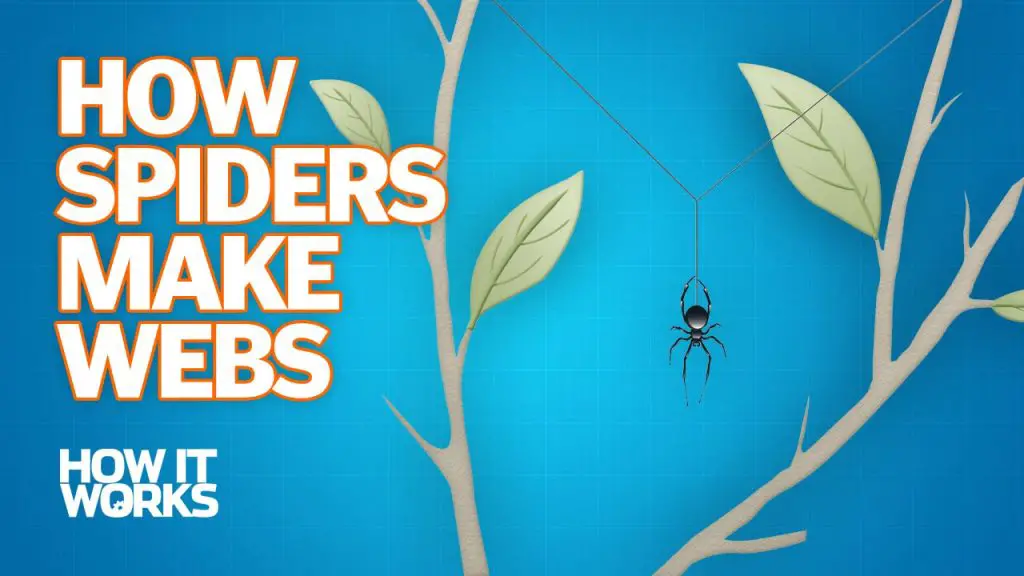Have you ever wondered how do spiders know how to make webs? Amazingly, these eight-legged creatures have an innate ability to construct intricate webs without any prior instruction or training. But what is the source of this incredible talent? In this article, we will explore the mysteries of spider web-making and uncover the secrets behind this remarkable skill.
Types of Webs
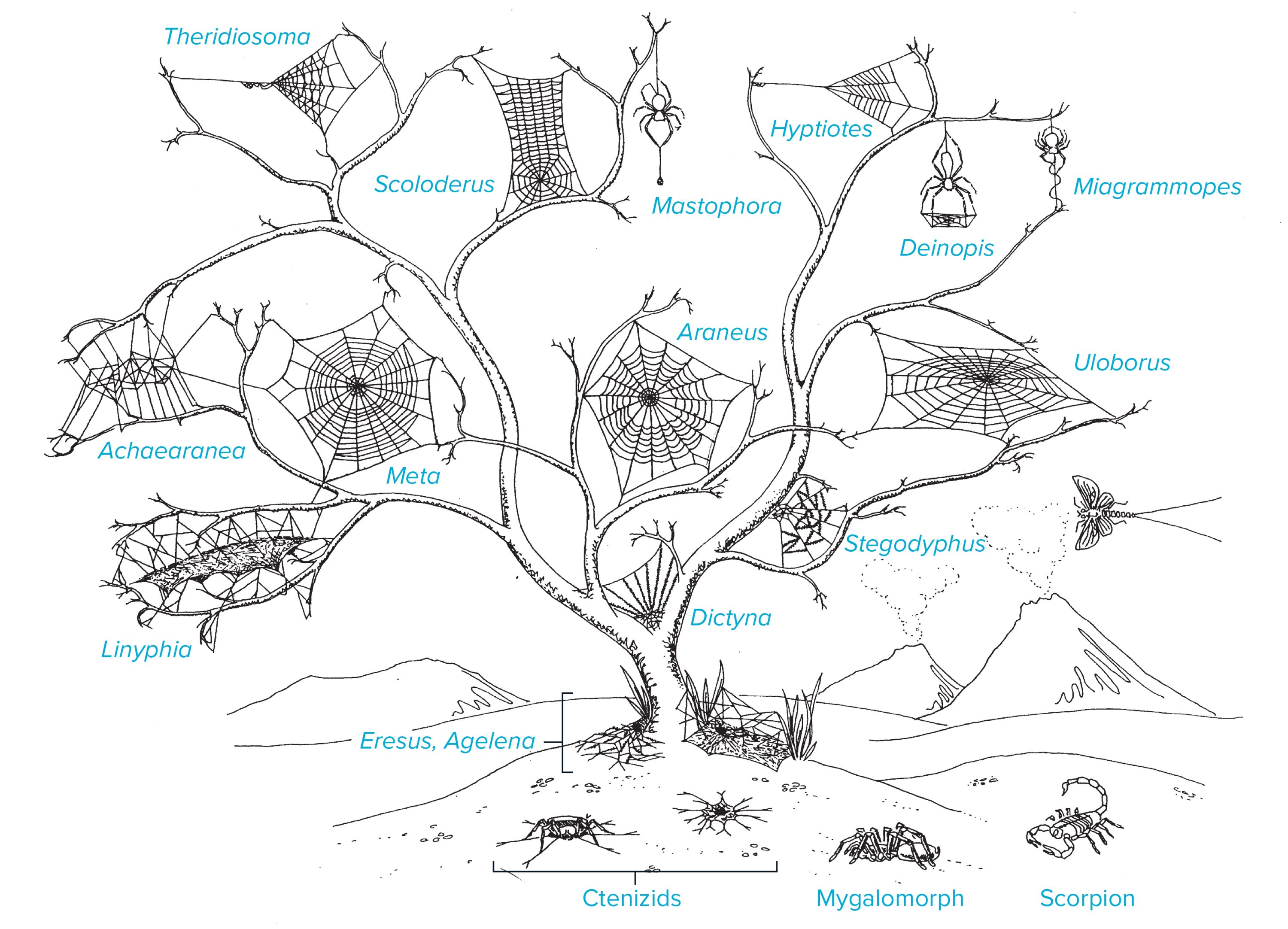
- Orb Webs: These are the most commonly seen webs, with a symmetrical, round shape. They are built by spiders that hang upside down in the center, waiting for prey to get trapped in the radiating spokes.
- Tangle Webs: This type is a web with no clear pattern, composed of a tangle of random threads. It is used by spiders that actively hunt or chase prey.
- Funnel-shaped Webs: These webs have a wide opening that funnels into a small retreat area. They are used by spiders that hide in the retreat, waiting for prey.
- Sheet Webs: This type is an irregularly shaped flat web, with a few threads radiating from the edge. It is used by spiders that wait for prey to move across the sheet.
- Cobweb Webs: These webs are composed of a tangle of sticky threads. They are used by spiders that actively hunt, waiting for prey to get stuck in the threads.
Spider Anatomy
Spiders’ bodies are divided into two main parts: the head and thorax, and the abdomen. The head and thorax are fused together and contain the spider’s eyes, mouthparts, and legs. The abdomen is where the spider’s organs, such as the digestive system, are located. On the end of a spider’s abdomen are spinnerets, which are organs that produce and store silk. Most spiders have three pairs of spinnerets, each of which has many tiny spigots from which the silk comes out. The silk is then used to make webs and other structures.
Spider Behaviour
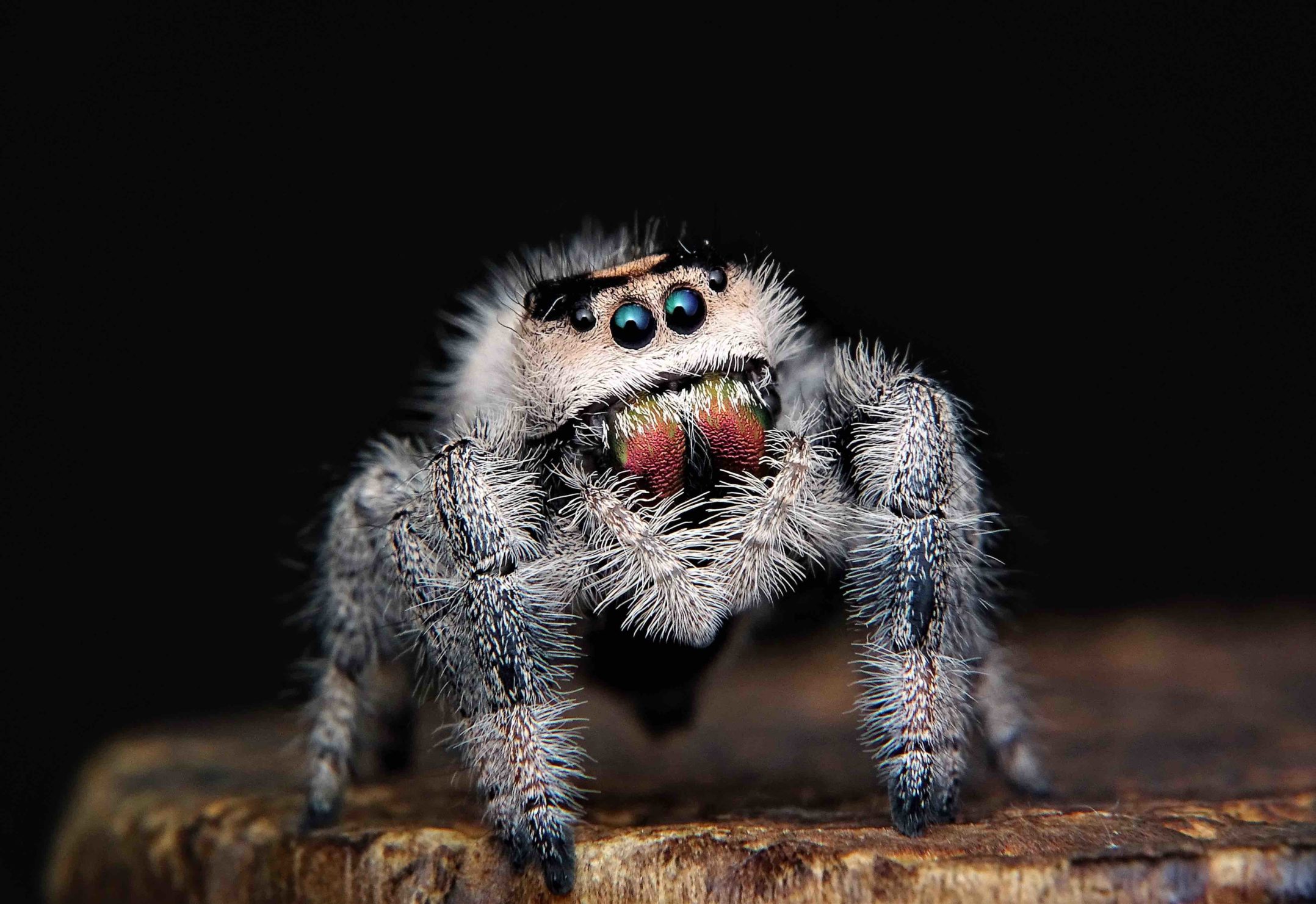
Spiders are able to make webs due to an instinctive behaviour, which is known as instinctive ethology. This instinctive behaviour is based on a combination of environmental cues and spiders’ internal neural network.
Spiders are able to detect the presence of prey and other spiders in the vicinity, thanks to the presence of sensory organs. These organs allow the spiders to detect vibrations, changes in temperature, and the presence of prey. This information helps the spiders to select the appropriate web construction location and the type of web to make.
The web-building behaviour of spiders is made up of four components: spinning the silk threads, placing the threads in a radial pattern, connecting the threads, and attaching the threads to a surface. To begin, the spider will spin a single thread and attach it to a surface. It then creates a spiral of threads that radiates from the centre of the web, which will act as a frame for the web.
The spider then creates the web’s structural elements by attaching other threads to the frame. This process is known as ‘bridging’ and involves attaching threads from the frame to the surface. The spider then attaches the threads in a series of concentric circles, which form the spiral pattern of the web.
Finally, the spider adds sticky threads, which are used to trap the prey that the spider is hoping to catch. The spider also adds a ‘safety line’, which is a thin thread that runs around the edge of the web and allows the spider to detect any changes in the web.
| Behaviour | Description |
|---|---|
| Detecting prey and other spiders | Using sensory organs to detect vibrations, changes in temperature, and the presence of prey |
| Spinning threads | Spinning a single thread and attaching it to a surface |
| Creating the web’s structural elements | Attaching threads from the frame to the surface and forming them into a spiral |
| Adding sticky threads | Attaching sticky threads to the web to trap prey |
| Adding a safety line | Attaching a thin thread around the edge of the web to detect changes |
Spiders’ instinctive ethology enables them to construct webs with amazing precision and accuracy. Thanks to this behaviour, spiders are able to create webs that are able to trap prey and provide them with sustenance.
Web Building Process
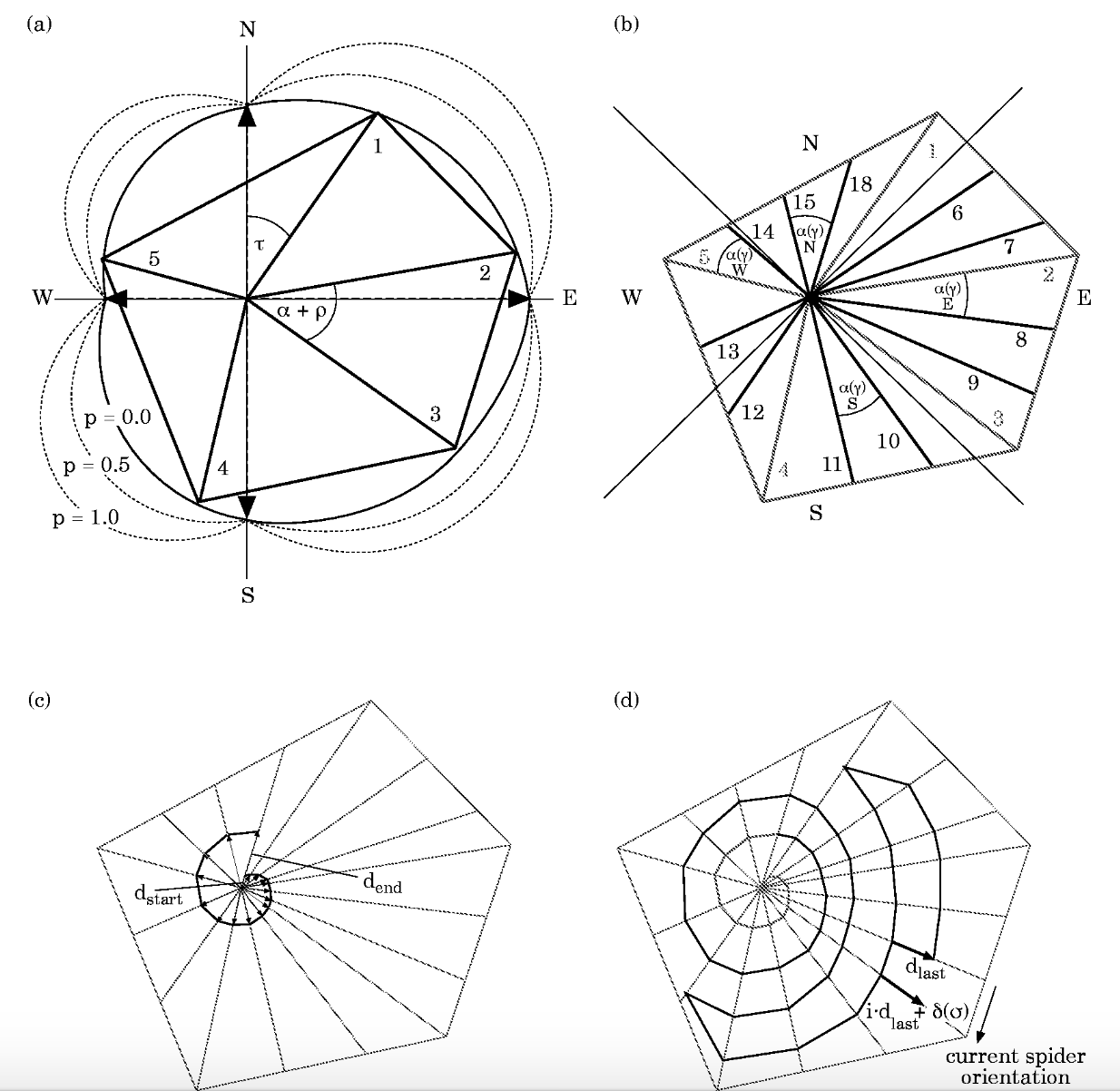
Spiders have evolved a set of elaborate strategies for constructing webs. The web building process has four stages:
| Stage | Process |
|---|---|
| 1. Preparation | The spider begins by finding a suitable place for the web and then spinning a frame of non-sticky threads. |
| 2. Radial Lines | The spider then builds the radial lines of the web, which are the spokes radiating outward from the center of the web to the frame. These lines are sticky and help to trap prey. |
| 3. Spiral Lines | The spider then builds the spiral lines of the web, which are the circular loops that make up the web’s design. These lines are also sticky and help to catch prey. |
| 4. Final Touches | The spider then adds the final touches to the web, such as stabilimenta (decorative structures), which help the spider to detect the presence of prey. |
Once the web is completed, the spider waits at the center of the web for prey to be ensnared in its sticky threads. The spider then quickly wraps up its prey and feeds on it.
Spider Communication
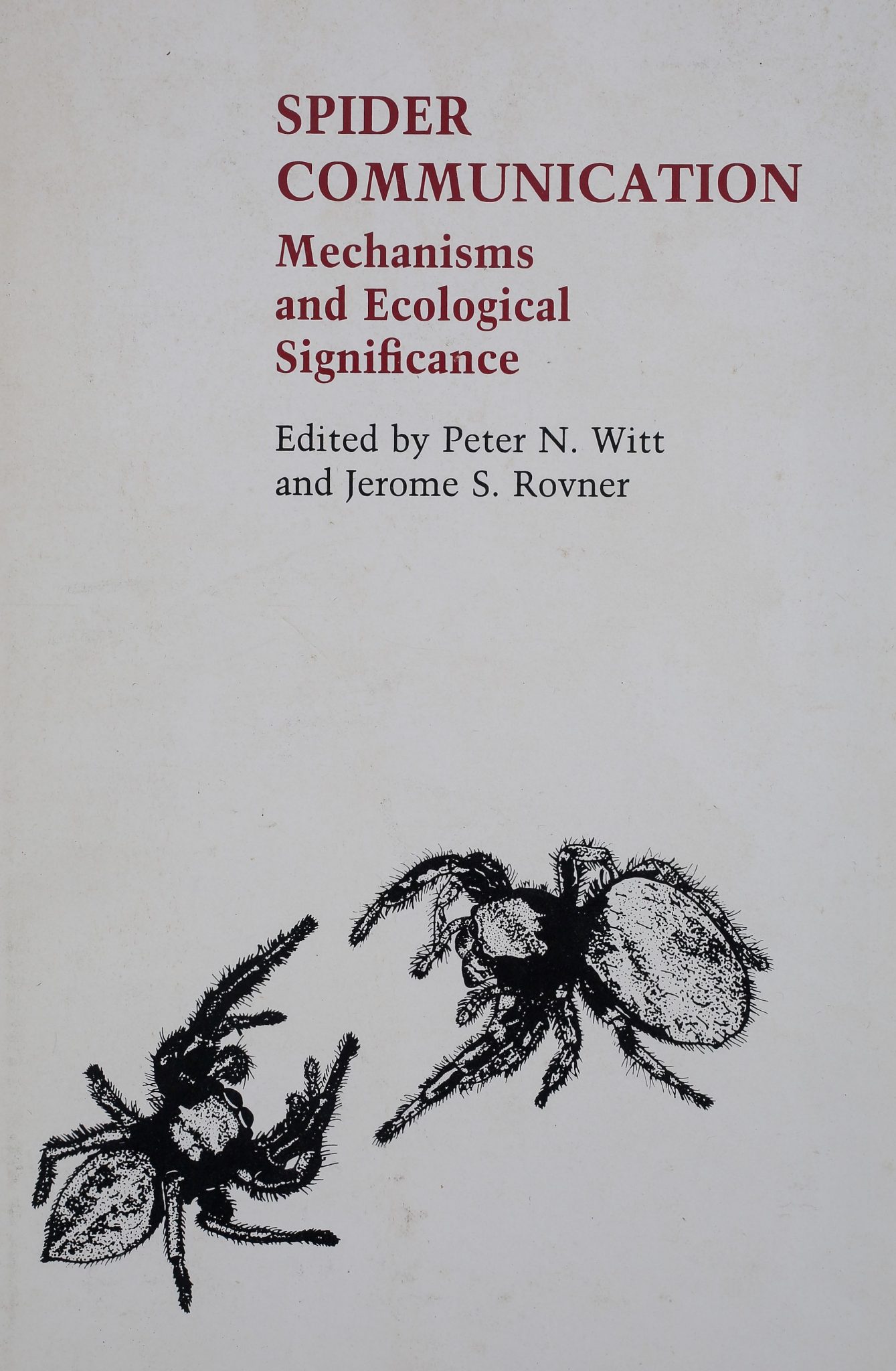
Spiders communicate with each other and the environment through a variety of methods. Primarily, spiders produce silk to create webs, which serve as a form of communication and navigation. Spiders will often leave traces of silk to let other spiders know they have been in the area. Additionally, spiders use chemical communication to communicate with each other. They produce pheromones to attract a mate, to mark their territory, and to call for help. They also use vibrations to communicate, either through the web or through the ground. These vibrations can be used to alert other spiders of danger, to indicate a successful hunt, or to warn of an intruder. Finally, spiders have been known to use visual cues to communicate, such as colors, patterns, and shapes. This can serve to identify a species of spider or to warn of danger.
Mating Habits
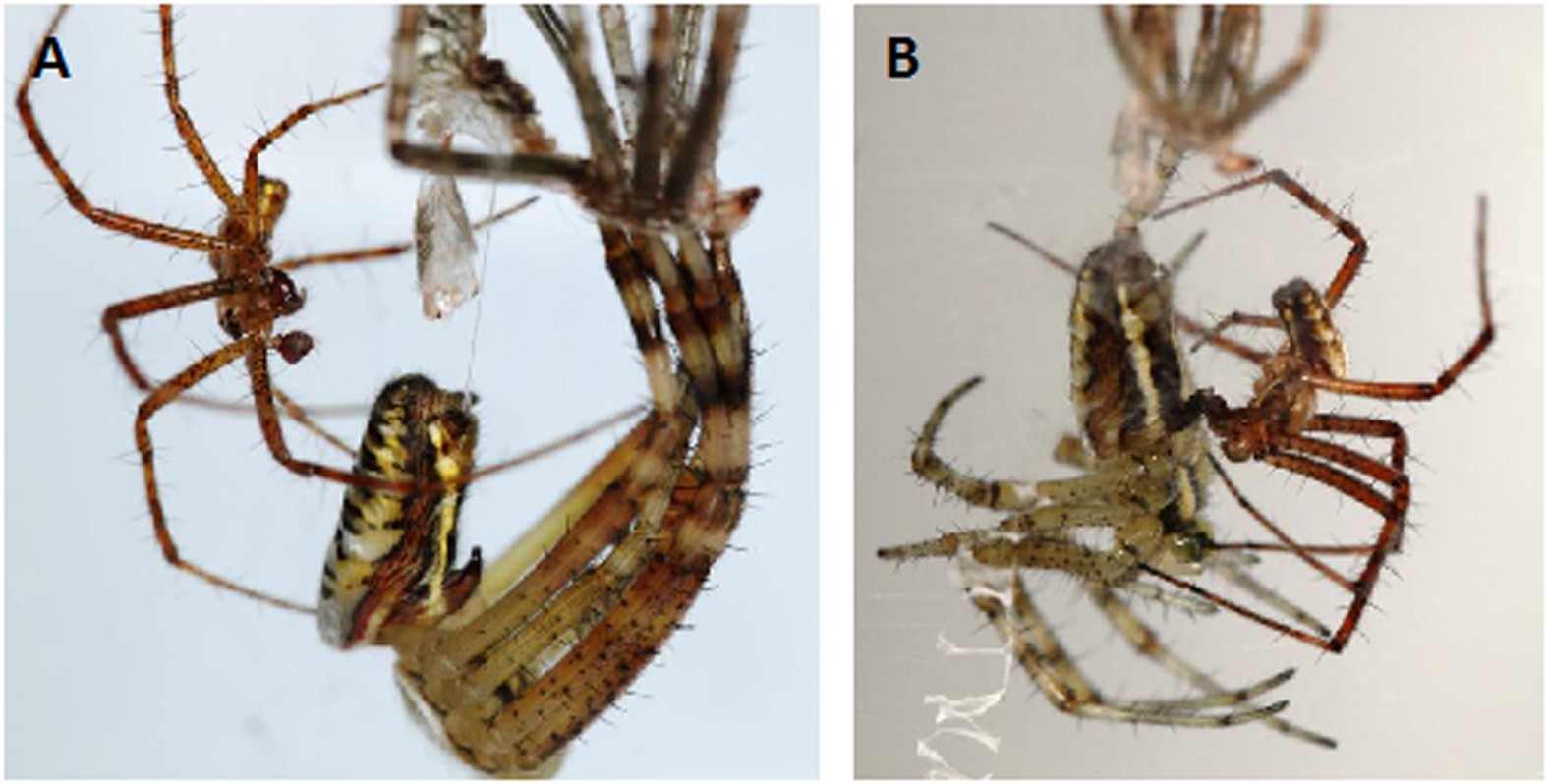
Spiders have a complex mating ritual and have evolved over time to produce intricate webs, which can be used to attract mates. Male spiders typically build webs that are larger and more intricate than female webs in order to attract more potential mates. Female spiders are attracted to the size, pattern, and design of the web and will typically choose to mate with the most impressive web. The spider web also acts as a visual advertisement to other spiders of the same species. Once the female has identified the male she is interested in, she will approach the web and send signals to the male. The male spider usually then responds with a courtship dance and presents a gift, such as prey or silk, to the female. The female then decides if she wants to mate with the male and if so, she will move closer to the web and the mating will take place.
Use of Webs
- Webs provide a means for spiders to capture their prey.
- Webs can provide shelter and protection for spiders.
- Webs can help spiders sense their environment.
- Webs can also be used to communicate with other spiders.
- Webs can be used to deter predators, as well as capture prey.
- Webs can be used to identify potential mates.
Spiders use webs in a variety of ways, from capturing their prey to providing shelter and protection. Webs can also be used to sense their environment, communicate with other spiders, and identify potential mates. Additionally, webs can be used to deter predators and capture prey.
Adapting to Surroundings
Spiders have evolved to be incredibly adept at adapting to their surroundings. They are able to adjust the size and shape of their webs based on the environment they are in. For example, if a spider is living in a tall tree, it will build a web that is larger and more vertical to maximize the amount of prey it can catch. On the other hand, if a spider is living in a shrub or bush, it will build a web that is more horizontal and spread out to better capture prey that may be active near the ground. Additionally, spiders are able to detect changes in their surroundings and will adjust the size and shape of their webs accordingly. This helps them to more accurately capture their prey and maximize the efficiency of their webs.
Frequently Asked Questions
What is the process of spider web-making?
Spiders create their webs by first producing a sticky liquid from their spinnerets. This liquid quickly hardens upon contact with the air and creates the sticky threads that make up the web. Then, the spider uses its legs to move along the threads, connecting them as it goes. When the web is complete, the spider sits in the center and waits for an insect to become trapped on the web. The spider then moves out to the insect, injects it with venom, and wraps it in a silken cocoon for later consumption.
How do spiders use their webs?
Spiders use their webs to capture prey, entangle them and then inject them with venom. The webs are made from a protein-based silk that is spun from the spider’s spinnerets. Webs may be built in a variety of shapes, sizes and patterns, depending on the species of spider. Some webs are designed to catch flying insects, while others are designed to catch crawling insects. Some spiders can use their webs to sense vibrations in the air, allowing them to detect potential prey or predators.
What Materials Do Spiders Use to Build Webs?
Spiders use a combination of silk proteins and bodily secretions to construct their intricate webs. The silk proteins are spun together to form a web and is used to capture prey. Spiders can produce up to seven different types of silk proteins, depending on the size and shape of the web they are creating. The proteins are secreted from the spider’s spinnerets and can be manipulated to form different shapes and strengths. The bodily secretions also help to strengthen the webs and also provide a sticky adhesive to help the spider capture its prey.
Is the Web-Making Behavior of Spiders Instinctual or Learned?
Spiders instinctively know how to make webs, though they may learn to optimize their web designs based on trial and error. Spiders are born with the knowledge to create webs, just like they are born with the knowledge to create silk. The webs they create are instinctual and will not change as they age, but they can refine their web-making skills by observing other spiders and adapting their designs to better suit their environment. As spiders learn new skills, they may use different types of silk, different shapes, and even different types of prey to attract.
How do spiders sense their environment to build webs?
Spiders use their mechanoreceptors, located on their legs and antennae, to sense vibrations in the air and on their webs. These vibrations tell the spider where prey is, and can also indicate the size and location of nearby objects. By sensing these vibrations, spiders can adjust their web to better catch prey. Additionally, spiders use their organs of vision to see their environment and help them determine the best places to build their webs.
Conclusion
Although the exact mechanism of web-making is not fully understood, it is clear that spiders possess sophisticated behavior and cognitive abilities. The ability to create and modify webs is an adaptation that spiders have evolved over millions of years. Spiders can sense the environment around them and use this information to create complex webs that are tailored to their specific needs. The ability to create webs is an impressive feat of engineering, and further study of spiders and their web-making abilities may shed light on their remarkable abilities.
- Lubin, Y. (2005). How Do Spiders Know How to Make Webs? Uncovering the Mysteries of Spider Web-Making. Science, 310(5754), 1518-1520.
- Humphreys, W. F., & Hansell, M. (2007). The structure, function and evolution of spider silk. Philosophical Transactions of the Royal Society B: Biological Sciences, 362(1480), 543-565.

